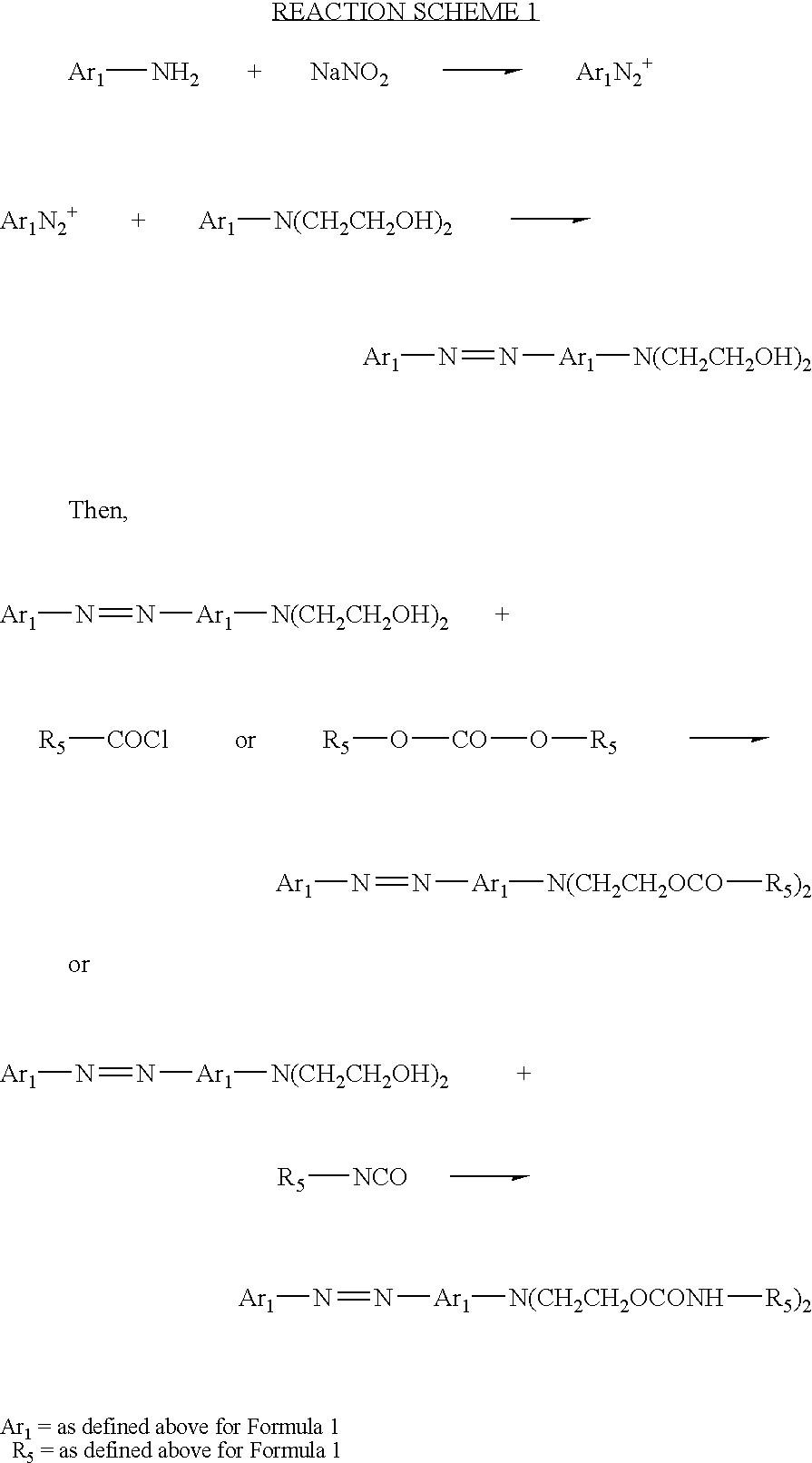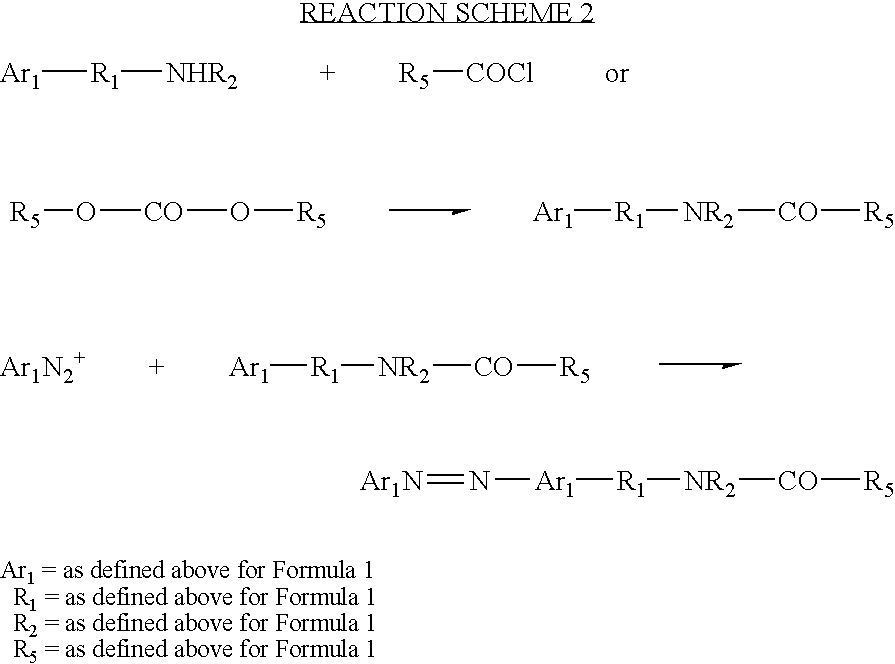Reactive yellow dyes useful for ocular devices
a technology of yellow dyes and ocular devices, applied in the field of blue light absorption-based ocular devices, can solve problems such as potential damage to the retina
- Summary
- Abstract
- Description
- Claims
- Application Information
AI Technical Summary
Benefits of technology
Problems solved by technology
Method used
Image
Examples
example 1
Synthesis of N,N-bis-(2-hydroxyethyl)-(4-phenylazo) aniline (Solvent Yellow 58)
[0026]The synthesis of N, N-bis-(2-hydroxyethyl)-(4-phenylazo) aniline is accomplished by coupling the diazonium salt of aniline with N-phenyl diethanolamine. A detailed procedure is also described in D. L. Jinkerson, U.S. Pat. No. 5,470,932, incorporated herein in its entirety by reference.
example 2
Synthesis of N,N-bis-(2-allylcarbamatoethyl)-(4′-phenylazo)aniline
[0027]A 1000-mL 3-neck, round bottom flask connected with a reflux condenser and a drying tube, is charged with 250 mL of methylene chloride, 5.7 grams (0.02 mole) of N,N-bis-(2-hydroxyethyl)-(4-phenylazo)aniline, 3.28 g of allyl isocyanate (0.04 mole) (Aldrich Chemical, Inc., Milwaukee, Wis.) and 0.014 g of dibutyltin dilaurate (Aldrich Chemical). The mixture is heated and refluxed overnight under vigorous stirring. The mixture is then checked with infrared spectroscopy and no residual isocyanate peak is found indicating the reaction is complete. The mixture is concentrated using a rotavapor. High performance liquid chromatography (HPLC) analysis indicates only one major product. The product is then passed through silica gel chromatography to give final purified product with a yield of at least 80 percent. The product is identified by nuclear magnetic resonance (NMR) and Mass Spectroscopy.
example 3
Synthesis of N,N-bis-(2-vinylacetoxyethyl)-(4′-phenylazo)aniline
[0028]A 1000-mL 3-neck, round bottom flask connected with a reflux condenser and a drying tube, is charged with 250 mL of methylene chloride, 5.7 grams (0.02 mole) of N, N-bis-(2-hydroxyethyl)-(4-phenylazo)aniline aniline and 4.04 grams of triethylamine (0.04 mole). The contents are chilled with an ice bath. Through a dropping funnel, 4.18 g (0.04 mole) of vinylacetyl chloride is added into the flask over a period of 30 minutes. The ice bath is then removed and the contents are continuously stirred overnight. The mixture is then filtered and then condensed using a rotavapor. HPLC analysis indicates only one major product. The product is then passed through silica gel chromatography to give a final purified product with a yield of at least 80 percent. The product is identified by NMR and Mass Spectroscopy.
PUM
| Property | Measurement | Unit |
|---|---|---|
| yellow | aaaaa | aaaaa |
| weight percent | aaaaa | aaaaa |
| weight percent | aaaaa | aaaaa |
Abstract
Description
Claims
Application Information
 Login to View More
Login to View More - R&D
- Intellectual Property
- Life Sciences
- Materials
- Tech Scout
- Unparalleled Data Quality
- Higher Quality Content
- 60% Fewer Hallucinations
Browse by: Latest US Patents, China's latest patents, Technical Efficacy Thesaurus, Application Domain, Technology Topic, Popular Technical Reports.
© 2025 PatSnap. All rights reserved.Legal|Privacy policy|Modern Slavery Act Transparency Statement|Sitemap|About US| Contact US: help@patsnap.com



